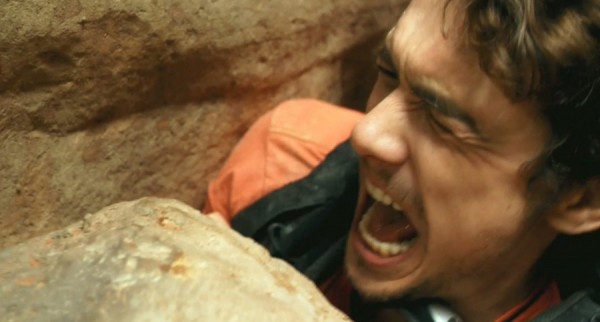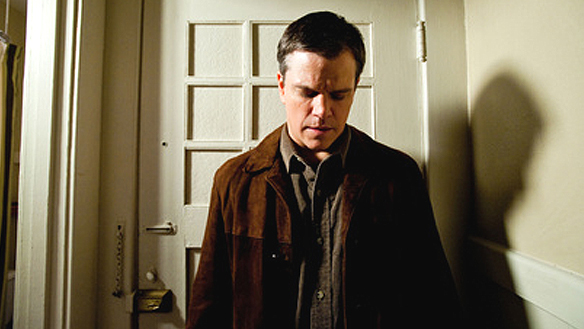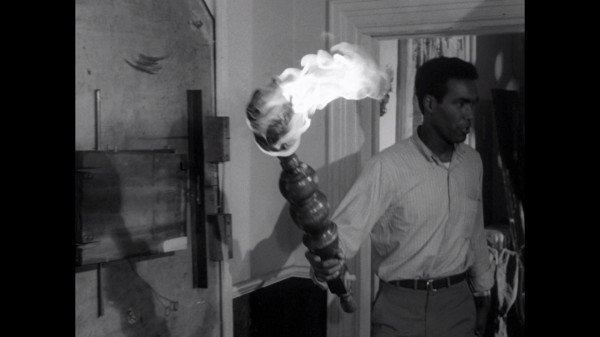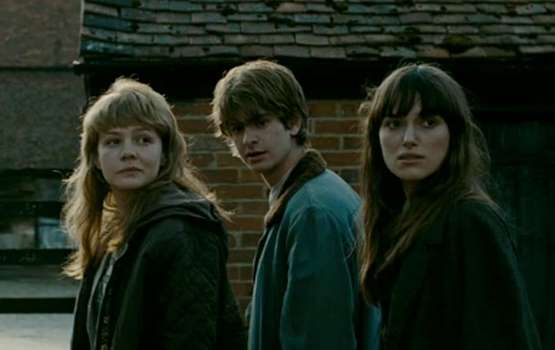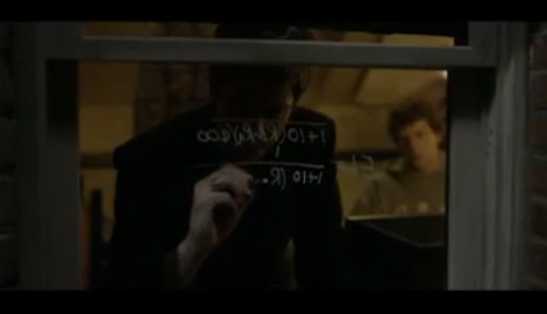
He may be half-blind and drunk, but the Dude still has perfect aim.
I’m not a fan of Westerns. Growing up, I often caught bits and pieces of films and shows set in the Old West whenever my dad was watching them, and never did I develop any interest. Hot, barren deserts and rough-riding cowboys held little of my short attention span as a child when juxtaposed with my DVD collection of action, sci-fi, and fantasy. As I got older, I avoided Westerns at all costs, even when I developed a passion for learning about film. The slow, boring impression instilled in me kept me from ever wanting to see classics like Sergio Leone’s films and any others crafted in the same gritty vein, and even to this day, I can count with one hand how many Westerns I’ve seen in their entirety. Yet because of this limited contact with the Western genre, True Grit surprised me so much. As a fan of the last collaboration between Jeff Bridges and the Coen’s in The Big Lebowski and an appreciator of the brothers’ crisp, gritty cinematic style in their darker films like No Country for Old Men, I decided to give True Grit a chance. What I witnessed was a film that not only anyone and everyone should see, especially Western-naysayers, but one that also defies the contemporary notion that remakes are crap riding on the name of a superior predecessor.
The Coen brothers took a big risk in remaking what is considered to be a Western classic that gave John Wayne his only Oscar. The film follows fourteen-year-old Mattie Ross (Hailee Steinfeld) in a blood hunt for her father’s killer, Tom Chaney (Josh Brolin), and after purchasing the services of U.S. Marshall Rooster Cogburn (Jeff Bridges), they trek into the wilderness with Texas Ranger LaBoeuf (Matt Damon) tagging along. The moment they enter the wild, the Coen brothers make it clear that the frontier is not some light-hearted place of adventure. Taking the “Unforgiven” approach, they dismantle whatever ideas you have of the West by turning it into a cold-hearted terrain that will never acknowledge your existence should you be unfortunate enough to perish out there. The best example of this is when Cogburn doesn’t bother seeking help for an injured man because there isn’t any.
Good and evil is another concept that the Coens place in the gray area. Cogburn isn’t some admirable, legendary lawman; he’s worn out, drunk, and just as eager to shoot somebody as the outlaws he’s put down. Not even the law is as concrete as Mattie believes. Despite her obsessive vendetta, she clings onto the principle of law and fairness as though she’s hanging off a ledge, and yet she rarely lets herself appear vulnerable to how cruel the world can be. On the other hand, the criminals aren’t completely sadistic and cutthroat. Chaney behaves like a child without guidance, and when something doesn’t go his way, he lashes out in the only way he knows how. Yes, he is bad, but it’s a small trait like this that allows the audience to connect a little, maybe even sympathize, with the so-called “villains.”
This reality of the genre is made even more profound by the cinematography, done by Roger Deakins (The Shawshank Redemption, No Country for Old Men). Each shot captures the coldness of the frontier with a sense of beauty and gloom thanks to the real locations that allow the actors to anchor themselves in. As for the performances, Jeff Bridges shines in the role that John Wayne called his own. He recites his dialogue with a gruff mumble that, while is sometimes hard to understand, carries how tattered and bitter he is. Matt Damon is decent as Leboeuf, a lawman who can’t help but show off his title, whether by his shiny badge or his loud spurs. He’s a bit animated at times when he’s debating with Mattie or Cogburn, but he balances that out with some humility, especially after surviving a run in with a few outlaws. However, it’s newcomer Hailee Steinfeld as Mattie who stands out the most. With the film telling her story and not Cogburn’s, Steinfeld seizes every chance she gets to dominate the screen as a girl with a strength and temperament beyond her years. She floors everyone she encounters with her stature and delivers her dialogue so sharply that you feel that Aaron Sorkin might have written her.
True Grit is more than just a great Western; it’s a great film. All of the pieces that went into it, from the thematic elements to the performances, worked perfectly together. In honor of Rooster Cogburn’s favorite drink, True Grit is a bottle of hard whiskey. It’s dark and unapologetic, but even if it’s not your cup of tea, you won’t regret the journey it takes you on.
-Sean


